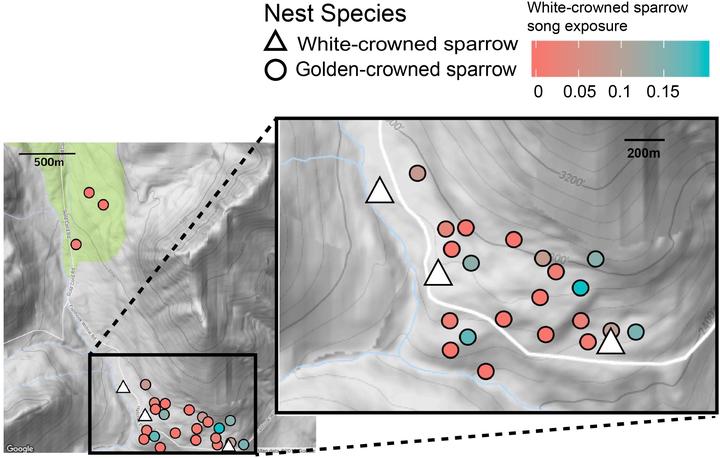
Abstract
Oscine songbirds are an ideal system for investigating how early experience affects vocal behavior. Young songbirds face a challenging task: how to recognize and selectively learn only their own species’ song, often during a time-limited window. Because birds are capable of hearing birdsong very early in life, early exposure to song could plausibly affect recognition of appropriate models; however, this idea conflicts with the traditional view that song learning occurs only after a bird leaves the nest. Thus, it remains unknown whether natural variation in acoustic exposure prior to song learning affects the template for recognition. In a population where sister species, golden-crowned and white-crowned sparrows, breed syntopically, we found that nestlings discriminate between heterospecific and conspecific song playbacks prior to the onset of song memorization. We then asked whether natural exposure to more frequent or louder heterospecific song explained any variation in golden-crowned nestling response to heterospecific song playbacks. We characterized the amount of each species’ song audible in golden-crowned sparrow nests and showed that even in a relatively small area, the ratio of heterospecific to conspecific song exposure varies from 0 to 20%. However, although many songbirds hear and respond to acoustic signals before fledging, golden-crowned sparrow nestlings that heard different amounts of heterospecific song did not behave differently in response to heterospecific playbacks. This study provides the first evidence that song discrimination at the onset of song learning is robust to the presence of closely related heterospecifics in nature, which may be an important adaptation in sympatry between potentially interbreeding taxa.